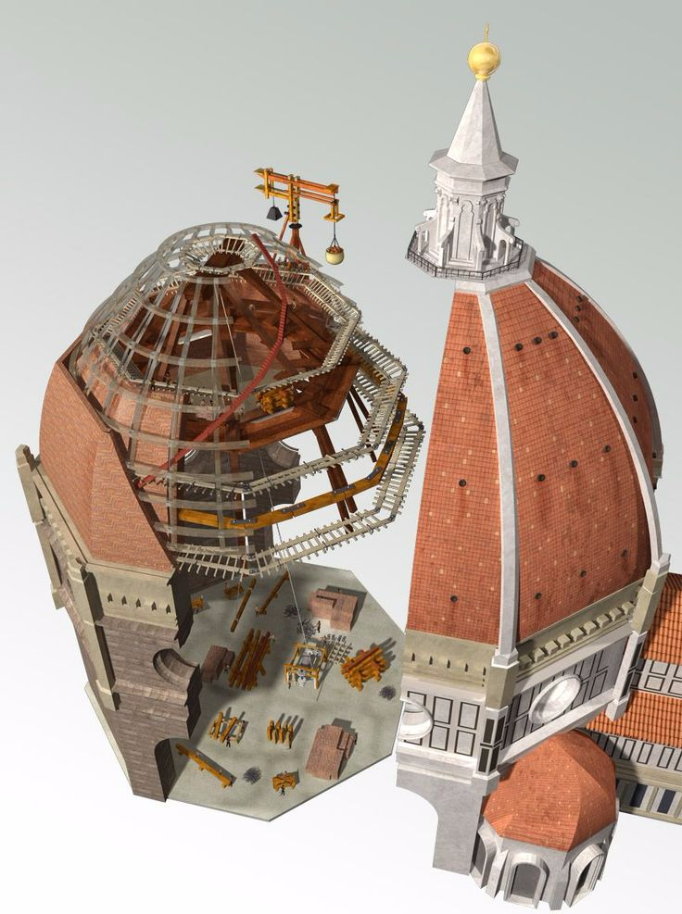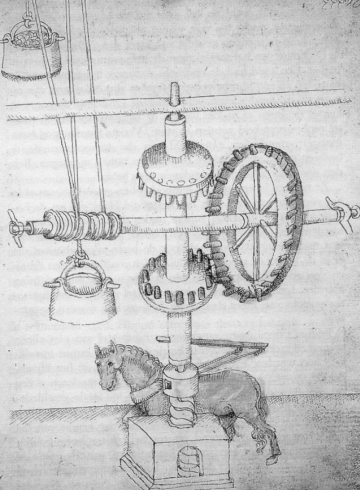ingenious solutions
unusual solutions for an unusual problem
De sihouet of the dome was fixed in the rules of the contest: it had to be built according to the quinto acuto. Brunelleschi had to follow this rule. But in realizing this concept he had to rely completely on himself. There wasn't any current practice in building great domes and this dimensions were so beyond normal that no-one knew how to start.
Here's the breaking point with the medieval building tradition of shared knowledge. This unusual problem needed an artist who could think of an unusual and creative solution. Brunelleschi designed not one, but two domes anchored to each other. Brunelleschi reinforced the dome with nine horizontal rings to catch the horizontal forces. As in medieval times the curved dome was built upon a wooden folding with the right curvature. But Brunelleschi used a construction he could move while building the dome. By doing so he didn't have to support the totality of the dom until it was finished. You can follow in the applet.
Drag the bronw point upward to construct the dome.
Move the green slider and move the folding to support the building of the dome and to guarantee the right curvature.
Next drawing shows the two domes, the structure with ribs and horizontal rings to hold the dome together.

elevating the building material
How to elevate hundreds of stone joists that weighted more than 770 kg each up to the top of the dome? The current hoists were completely insufficient for the job, so Brunelleschi designed himself a revolutionary hoist driven by oxes. And alike everything regarding the dome the hoist to was gigantic. Ropes with a length of 300 m were wrapped around a spool with a perimeter of 1,5 m had, made out of a gigantic tree.
Mariano di Jacopo, named il Taccola, Italians ingeneer and contemporary of Brunelleschi made a drawing of Brunelleschi's hoist, but he drew a horse instead of two oxes.
